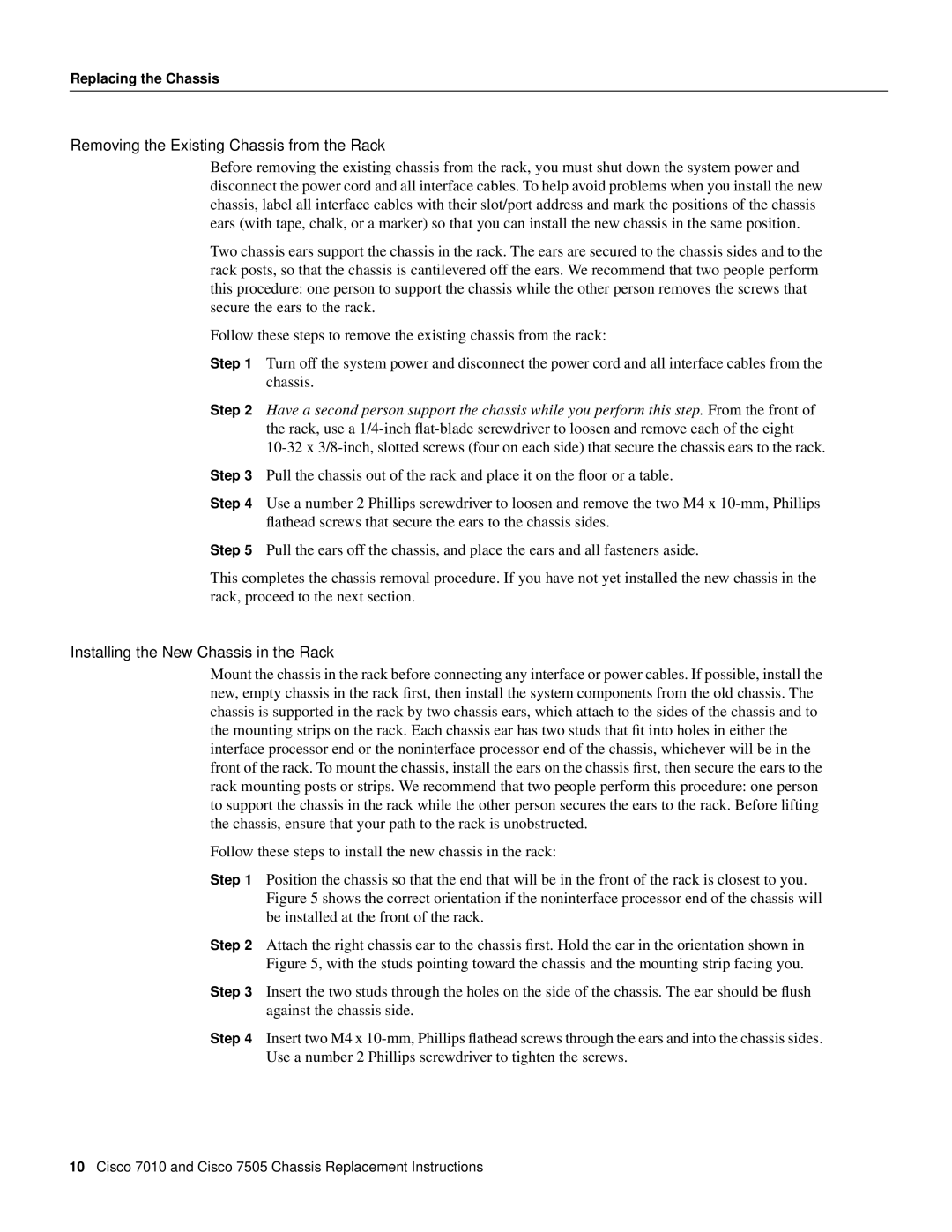Replacing the Chassis
Removing the Existing Chassis from the Rack
Before removing the existing chassis from the rack, you must shut down the system power and disconnect the power cord and all interface cables. To help avoid problems when you install the new chassis, label all interface cables with their slot/port address and mark the positions of the chassis ears (with tape, chalk, or a marker) so that you can install the new chassis in the same position.
Two chassis ears support the chassis in the rack. The ears are secured to the chassis sides and to the rack posts, so that the chassis is cantilevered off the ears. We recommend that two people perform this procedure: one person to support the chassis while the other person removes the screws that secure the ears to the rack.
Follow these steps to remove the existing chassis from the rack:
Step 1 Turn off the system power and disconnect the power cord and all interface cables from the chassis.
Step 2 Have a second person support the chassis while you perform this step. From the front of the rack, use a
Step 3 Pull the chassis out of the rack and place it on the floor or a table.
Step 4 Use a number 2 Phillips screwdriver to loosen and remove the two M4 x
Step 5 Pull the ears off the chassis, and place the ears and all fasteners aside.
This completes the chassis removal procedure. If you have not yet installed the new chassis in the rack, proceed to the next section.
Installing the New Chassis in the Rack
Mount the chassis in the rack before connecting any interface or power cables. If possible, install the new, empty chassis in the rack first, then install the system components from the old chassis. The chassis is supported in the rack by two chassis ears, which attach to the sides of the chassis and to the mounting strips on the rack. Each chassis ear has two studs that fit into holes in either the interface processor end or the noninterface processor end of the chassis, whichever will be in the front of the rack. To mount the chassis, install the ears on the chassis first, then secure the ears to the rack mounting posts or strips. We recommend that two people perform this procedure: one person to support the chassis in the rack while the other person secures the ears to the rack. Before lifting the chassis, ensure that your path to the rack is unobstructed.
Follow these steps to install the new chassis in the rack:
Step 1 Position the chassis so that the end that will be in the front of the rack is closest to you. Figure 5 shows the correct orientation if the noninterface processor end of the chassis will be installed at the front of the rack.
Step 2 Attach the right chassis ear to the chassis first. Hold the ear in the orientation shown in Figure 5, with the studs pointing toward the chassis and the mounting strip facing you.
Step 3 Insert the two studs through the holes on the side of the chassis. The ear should be flush against the chassis side.
Step 4 Insert two M4 x
10Cisco 7010 and Cisco 7505 Chassis Replacement Instructions
